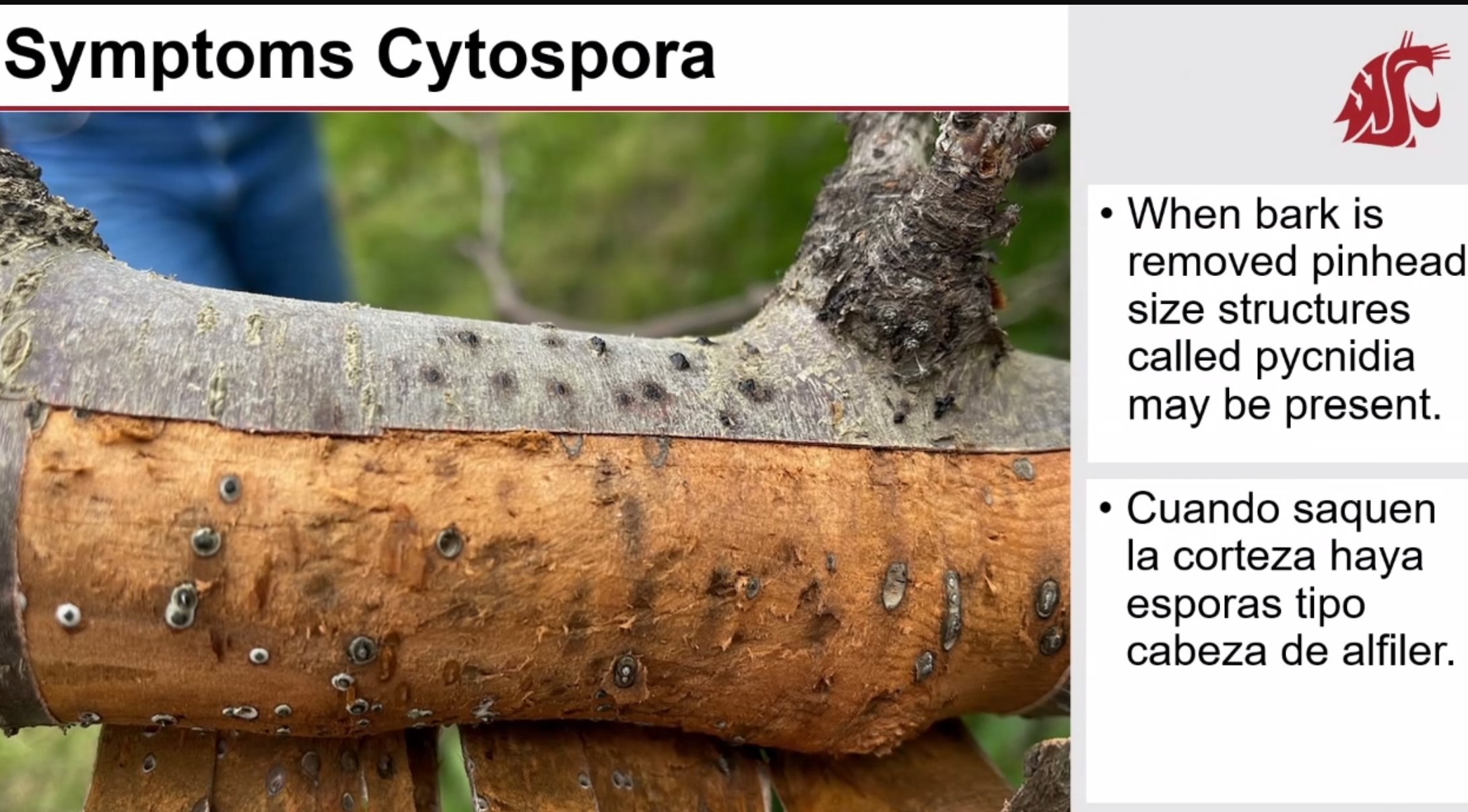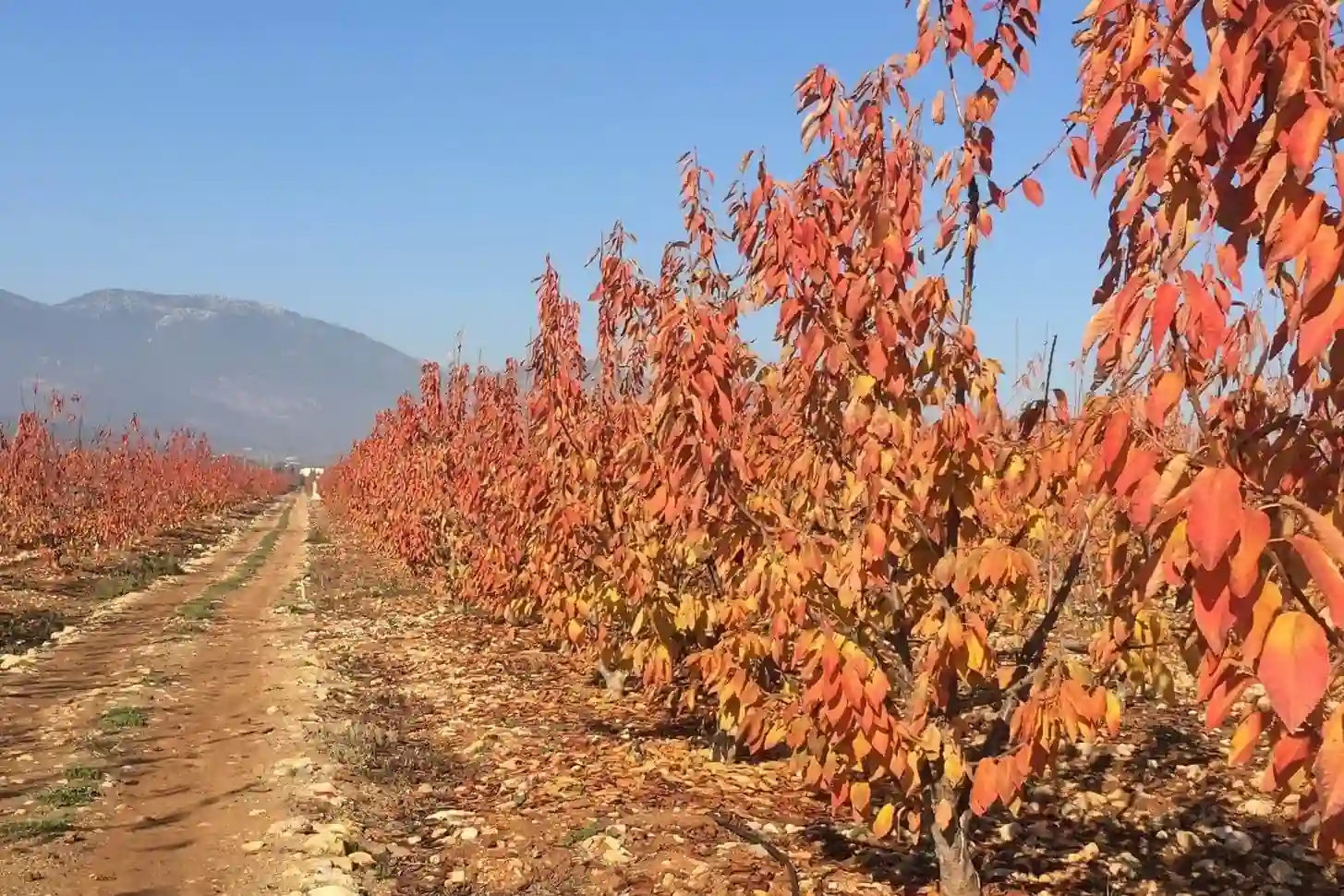The year 2023 was a year to forget for cherry growers in the State of Washington (USA). A bacterial canker epidemic (BCD) decimated crops and led to the uprooting of hundreds of thousands of trees. During the latest edition of the Stone Fruit Day, organized by Washington State University, Frank Zhao, a professor in WSU's Department of Plant Pathology, presented the results of various research studies, including one conducted in 2023 on 73 cherry orchards across Washington, Oregon, and California.
Bacterial canker, a serious problem in Washington
According to data from the Northwest Horticultural Council, Washington is the leading producer of sweet cherries in the United States. The production value of Washington State alone is estimated at around $800 million annually (USDA NASS, 2022). BCD is therefore a significant threat to the state's economy, and in 2023, it mainly affected young orchards. The research conducted by Prof. Zhao focused on cherry orchards less than 8 years old. The WSU research team collected tree samples to determine which bacteria were causing the infection. A total of 470 Pseudomonas isolates were identified: in 75% of cases, it was Pseudomonas syringae pv. syringae (PSS), in 5% Pseudomonas amygdaly pv. morsprunorum (PAM), and in the remaining 20%, unknown strains of Pseudomonas. “Moreover,” emphasized Prof. Zhao during his presentation, “this is the first time PAM has been found in cherry orchards in the State of Washington.”
Damage caused by bacterial canker
Bacterial canker in cherry trees causes cortical lesions, gummosis with reddish exudates, and can lead to the wilting of branches initially surrounded by the infection, as well as newly developed buds or flowers. The disease is also evident on leaves, where it causes spotting. “The periods requiring the most attention,” explained the professor, “are autumn and spring. The bacteria present in the orchard enter plant tissues during leaf fall, aided by rain, and overwinter there. They become active again in spring as temperatures rise.”
Spring is another critical period, especially if cherry trees have frost damage or have been pruned, as the bacteria require a wound to penetrate the plant. However, they can also survive on leaf surfaces, bark, or even on weeds surrounding the tree.”
Whenever trees are damaged by extreme weather conditions or agricultural operations, the risk of infection increases, particularly if the cherry tree is exposed to water (from irrigation or rainfall) and temperatures are cool. According to research findings, frost damage may have been the primary cause of the epidemic that occurred in Washington State in 2023.
Copper resistance is widespread in Washington
Prof. Zhao's team also investigated the prevalence of copper resistance in Pseudomonas syringae pv. syringae and Pseudomonas amygdaly pv. morsprunorum in Washington State, as copper is widely used to treat bacterial canker. “What we found is that copper resistance is widely prevalent. Out of 73 monitored orchards, 71 showed copper resistance.” Cherry growers also frequently use calcium polysulfide to control bacterial canker. The tests conducted by WSU showed that 24 and 48 hours after treatment, calcium polysulfide effectively limited bacterial growth.
Guide to Preventing Bacterial Canker
Once the cherry grower has noticed the infection, the best thing to do is to prune: cut below the point where the attack is visible. However, researchers have asked: to what extent? In other words, how far below the infection should the cut be made? "We conducted a simple experiment," explained Professor Zhao, "we inoculated the bacteria and then tried to identify it below the point where the infection was visible." The experiment verified that at 7.62 cm (3 inches) only 7 out of 38 plants still showed bacterial activity, while at 12.7 cm (5 inches), the bacteria had completely disappeared.

The weapons available to cherry growers, once the bacteria have entered the orchard, are few. The WSU team therefore emphasized the need to prevent infections and provided a practical guide to follow to minimize risks. Among the useful tips, in addition to pruning in dry conditions and postponing pruning as much as possible towards the summer, avoid planting new cherry orchards in the immediate vicinity of old cherry orchards and do not plant new trees near old infected and uprooted trees, prefer drip irrigation over sprinkler irrigation, use plastic protections for young trees, control weeds where bacteria could overwinter, and avoid excessive nitrogen-based fertilization, especially late in the season, avoid any type of stress to the plants, and above all, avoid injuries.
Canker from Fungal Infection: Cytospora Leucostoma Prevails in Washington
Bacteria that cause sweet cherry decline, but also fungi. During Stone Fruit Day, Tianna DuPont (Tree Fruit Extension Specialist WSU) addressed the reasons behind the decline and presented a report titled: "What Fungal Diseases are Causing Cherry Cankers in Washington and Oregon?" Symptoms similar to bacterial canker caused by Pseudomonas syringae pv. syringae (PSS) and Pseudomonas amygdaly pv. morsprunorum (PAM) are caused by some fungi: Cytospora Leucostoma, Eutypa, Calosphaeria, and Botryosphaeria. "We conducted a survey," explained Tianna DuPont, "on 87 cherry orchards between Washington State and Oregon. The survey lasted two years and aimed to determine which was the most frequent pathogen behind the decline of sweet cherries." The research determined that in 41 cherry orchards the disease was caused by Cytospora Leucostoma, in 12 cherry orchards it was bacterial canker, in 10 it was Calosphaeria, in 8 Eutypa, and in 2 Botryosphaeria. The rest were mixed pathogens (14 cherry orchards).

"Unlike bacterial canker, these fungal infections do not necessarily cause gummosis," explained DuPont. "What clearly distinguishes them is that removing the bark reveals a distinct line between the dead area of the plant and the still living one. Moreover, especially with Cytospora, removing the bark reveals small dots underneath, black eruptions called pycnidia, which are the spores."
Whatever the agent that caused the infection, the measures to be taken are quite similar: "Cut about 30 cm (approximately 1 foot) below the dead area and remove the material. If you don't cut, the spores will continue to spread. Ideally, make the cuts in the warm and dry months, in July and August, the wounds will heal faster and there will be less chance of new infections. The important thing is to identify the edge of the infection and remove below it, unfortunately, it is not always easy to identify the edge of the dead tissue."
Barbara Righini
Photo credit: WSU, Suffolk Fruit Tree
Cherry Times - All rights reserved














